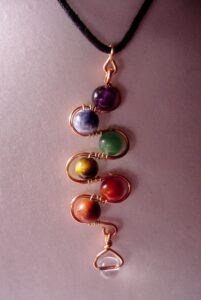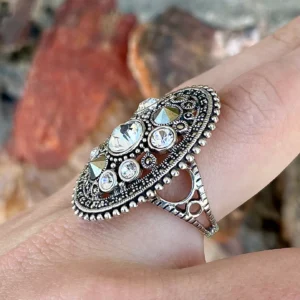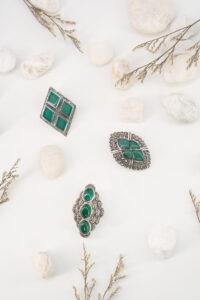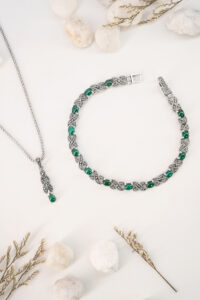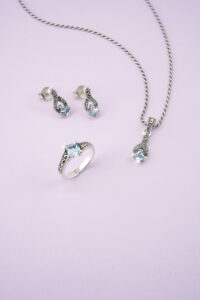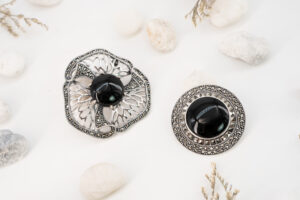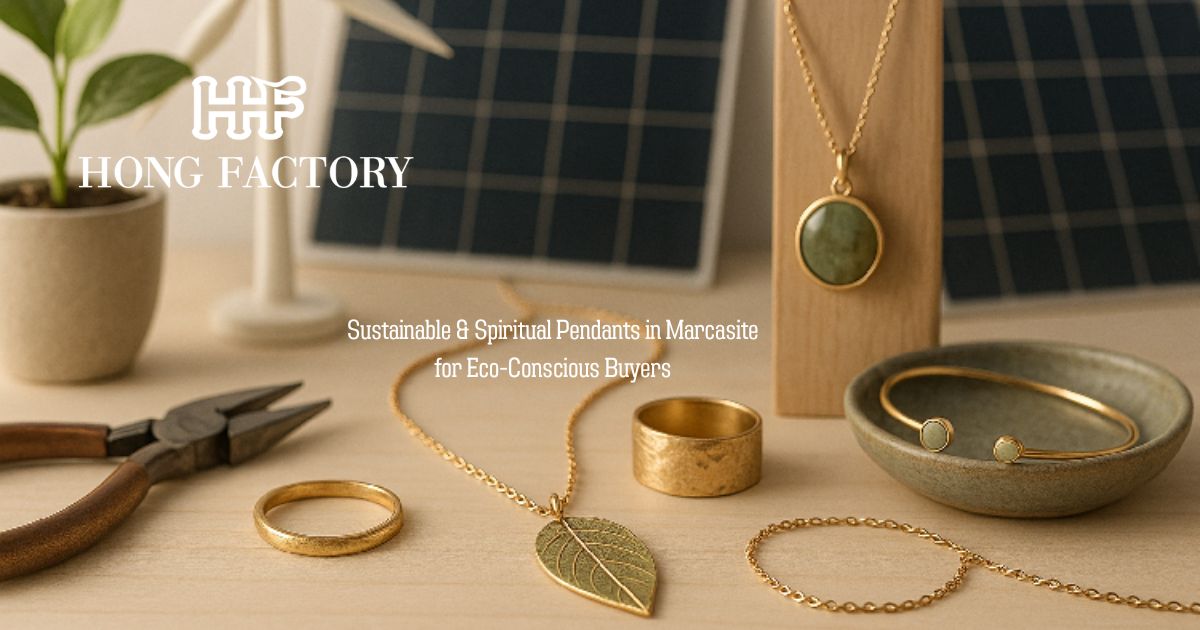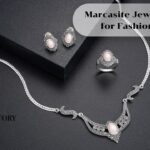As sustainability and spiritual mindfulness become central to consumer behavior, the demand for meaningful, responsibly made jewelry is on the rise. Among the most cherished pieces in this space are marcasite pendants—accessories that blend timeless beauty with purpose-driven design. These pieces not only serve as stylish adornments but also function as symbols of belief, protection, and personal values. For eco-conscious buyers, marcasite pendants offer a graceful way to wear their ideals while minimizing their impact on the planet.
Sustainable & Spiritual Pendants in Marcasite for Eco-Conscious Buyers

Why Choose Marcasite?
Marcasite, a mineral known for its subtle metallic glimmer and antique charm, has long been appreciated for its aesthetic versatility and symbolic richness. When paired with sustainable metals like recycled sterling silver, marcasite creates a vintage-inspired yet environmentally conscious accessory.
Symbolically, marcasite is believed to promote clarity, confidence, and emotional resilience. For spiritual buyers, this makes it more than a decorative stone—it becomes a wearable affirmation of strength and grounded energy. When shaped into meaningful pendant motifs, marcasite amplifies the connection between design and intention.
The Role of Spiritual Symbolism in Pendant Design
Spiritual pendants are designed not just to please the eye but to speak to the soul. Common symbols found in marcasite pendant designs include:
- Lotus flowers – representing purity and spiritual rebirth
- Tree of life – a symbol of interconnection, grounding, and growth
- Crescent moons – for intuition, transformation, and feminine energy
- Hamsa hands and evil eyes – protection against negative energy
- Mandala patterns – embodying harmony and wholeness
Each of these symbols holds unique meaning for wearers, allowing them to select pendants that reflect personal beliefs or emotional aspirations. When combined with the depth and texture of marcasite, these symbols take on an elevated, almost talismanic quality.
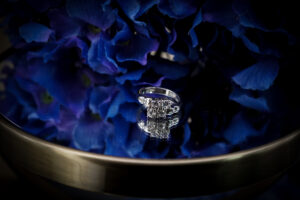
Eco-Friendly Materials and Ethical Production
In Thailand, where marcasite jewelry has a rich artisanal heritage, many manufacturers are leading the charge in sustainable practices. Ethical sourcing of materials is key—recycled sterling silver, conflict-free stones, and environmentally safe polishing methods are becoming standard.
These manufacturers often implement low-waste processes, fair labor policies, and energy-efficient workshops. Some also participate in certifications or partner with organizations that promote responsible trade and sustainability.
For buyers, this means that the pendant they wear is not only beautiful and symbolic but also created in alignment with ethical values and environmental care.
The Appeal of Long-Lasting Craftsmanship
Durability is a pillar of sustainability. Unlike fast fashion accessories that degrade quickly, high-quality marcasite pendants are made to last. Reinforced settings, careful handwork, and tarnish-resistant finishes ensure these pieces remain radiant for years.
Because of their timeless design and strong construction, these pendants are often passed down or kept as sentimental treasures. Their lasting nature supports the ethos of slow fashion, where quality and emotional significance outweigh quantity and disposability.

Packaging with Purpose
For eco-conscious buyers, the purchasing journey extends beyond the product itself. Sustainable packaging reinforces a brand’s commitment to the environment. Many Thai marcasite manufacturers now use recycled paper boxes, biodegradable bags, and soy-based inks. Some even include printed cards explaining the pendant’s spiritual meaning and how it was made.
These thoughtful touches help customers feel connected to the entire story of their pendant—from the materials and symbols to the hands that crafted it.
Reaching the Eco-Spiritual Audience
Marketing sustainable spiritual pendants requires a thoughtful approach that highlights both ethical credentials and emotional resonance. Storytelling is key—whether it’s through videos showing artisan techniques, blogs exploring the history of spiritual symbols, or customer testimonials about how the pendant has personal significance.
Retailers can also create bundles or gift sets centered around spiritual themes, such as protection, balance, or love. Seasonal promotions—like mindfulness-themed Mother’s Day or solstice collections—can create further alignment with this audience.
Social platforms like Instagram, Pinterest, and YouTube are ideal for visual storytelling. Showcase pendants in use during yoga sessions, meditation practices, or outdoor rituals to reinforce their purpose and versatility.

Case Study: Ethical Jewelry Brand Finds Success
A UK-based jewelry retailer launched a line of Thai-made marcasite pendants featuring spiritual symbols and ethically sourced materials. The launch included a social media campaign focused on the spiritual meaning behind each design, supported by videos from Thai artisans.
Within six weeks, the collection outsold expectations by 40%, with a high repeat customer rate. Customers praised not only the beauty of the pieces but also the transparency of the sourcing and the depth of the symbolic messaging. The brand’s authenticity and alignment with eco-spiritual values became its key differentiator.
How to Source Sustainable Marcasite Pendants
Retailers interested in offering marcasite pendants that meet eco-conscious and spiritual criteria should consider partnering with Thai manufacturers experienced in ethical production. Key points to evaluate include:
- Use of recycled metals and eco-friendly practices
- Options for symbolic or spiritual design customization
- Transparent labor policies and fair trade participation
- Capacity for storytelling support and co-branded messaging
Trade shows such as the Bangkok Gems & Jewelry Fair, and digital sourcing platforms with verified sustainable vendors, are excellent places to start.
Establishing direct relationships with manufacturers enables better customization, reduced costs, and consistency in both quality and messaging.
Sustainable and spiritual marcasite pendants represent a fusion of conscience, craftsmanship, and cultural symbolism. For eco-conscious buyers, they offer a powerful way to wear their values while embracing the beauty and legacy of artisanal jewelry.
For retailers, these pendants offer a high-margin, high-impact product category that speaks to some of the fastest-growing movements in fashion: ethical consumption and personal meaning. As more buyers seek depth and responsibility in their jewelry choices, marcasite pendants rise as a luminous symbol of style with soul.

The jewelry industry has long been shaped by tradition, elegance, and generational gifting. But Gen Z and younger millennials are flipping the script and bringing fresh, sometimes unexpected preferences to the table.
Today’s younger retail customers aren’t necessarily loyal to diamonds or drawn to gold in the way their parents were. They’re bold, ethically conscious, and deeply expressive. Their taste in jewelry is less about legacy and more about identity.
Understanding these shifts isn’t just helpful it’s critical for brands hoping to stay relevant. Here’s what might surprise you about the jewelry preferences of today’s youngest shoppers.
The Surprising Jewelry Preferences of Younger Retail Customers
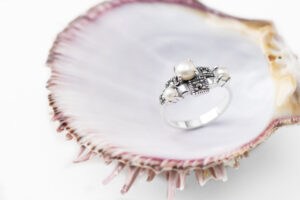
1. Meaning Matters More Than Materials
While previous generations may have prioritized karat weight or gemstone rarity, Gen Z customers want pieces that say something about who they are, what they believe, or what matters to them.
What They’re Buying:
- Birthstone pieces with personal significance
- Zodiac-themed collections
- Jewelry tied to mental health or social causes
Implication: Narrative and emotion drive sales more than material alone.
2. Silver Is Back (and More Accessible)
Silver is enjoying a strong comeback, particularly among younger wearers who appreciate its affordability, versatility, and cooler tones.
Why Silver Wins:
- Easier to mix and layer
- Often feels more gender-neutral
- More affordable than gold but still precious
Trend Watch: Sterling silver with oxidized finishes and matte textures is gaining traction for its modern, moody aesthetic.
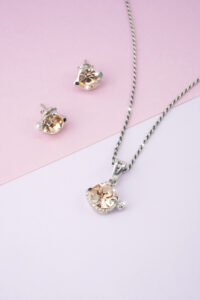
3. Gender-Neutral and Inclusive Designs Are in Demand
Younger buyers value jewelry that transcends gender norms.
Popular Styles:
- Chunky chains and bold rings with unisex appeal
- Minimalist earrings and studs marketed without gendered language
- Brooches and pins for all styles and identities
Tip for Retailers: Ditch the “men’s” and “women’s” labels highlight the vibe or styling instead.
4. Ethical and Sustainable Sourcing Is a Must
This demographic is highly conscious of where their jewelry comes from and how it was made.
Key Preferences:
- Recycled metals and lab-grown stones
- Transparent supply chain information
- Carbon-neutral or low-impact packaging
Proof Point: Brands that display ethical certifications or share artisan stories earn trust and loyalty.

5. Personalization Is the Ultimate Luxury
Customization is big especially when it’s fast, easy, and affordable.
Common Requests:
- Initial charms and engraved pendants
- Custom ring sizing and stacking options
- Mix-and-match chains with interchangeable elements
Retail Strategy: Offer modular systems or personalization stations in-store or online.
6. Micro-Collections and Capsule Drops Outperform Big Launches
Forget the traditional spring/summer drop young customers respond better to focused, limited-edition releases.
Why It Works:
- Feels fresh, exclusive, and designed “for them”
- Builds anticipation and drives faster purchasing
- Easier to promote on social media and through influencers
Tip: Tie drops to culture, moodboards, or social movements not just seasons.
7. They’re Comfortable Mixing Price Points
Younger buyers are just as happy pairing a $20 ring with a $200 necklace.
How They Shop:
- Value expressive design and ethical sourcing more than price
- Prioritize “how it makes me feel” over long-term investment
Retail Insight: Offer a range of price points within a single design aesthetic or brand voice.
8. They Shop Through Instagram, TikTok, and Peer Recommendations
This is a generation raised on visual content and social validation.
Influencing Factors:
- Peer unboxings and micro-influencer reviews
- Shoppable Instagram or TikTok product tags
- Short-form videos showing styling or “try-on” moments
Marketing Tip: Don’t just show jewelry show the lifestyle and emotion around it.
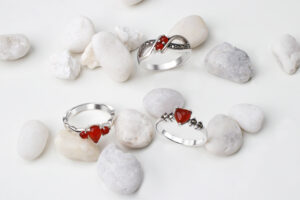
9. Rings, Earrings, and Layering Pieces Lead
Among younger buyers, these categories consistently perform best.
Most-Loved:
- Statement rings and stackable bands
- Ear cuffs, climbers, and asymmetrical earrings
- Layered necklaces and chain mixes
Merchandising Move: Curate “stack & layer” sets and encourage experimentation.
10. They Want to Be Part of the Design Story
This group doesn’t just want to buy they want to co-create.
Examples:
- Voting on future designs via social polls
- Submitting moodboards or style ideas
- Joining insider groups or “first look” launches
Engagement Strategy: Invite them behind the scenes digitally or in real life.
Connection Over Convention
Young jewelry customers are savvy, expressive, and values-driven. They’re not bound by tradition or legacy they want pieces that reflect their identity, values, and vibe.
To win their loyalty, brands must offer more than sparkle. They must offer storytelling, transparency, and an invitation to co-create.
Because for the next generation of buyers, jewelry isn’t just an accessory.
It’s a personal statement. And they’re ready to wear it.
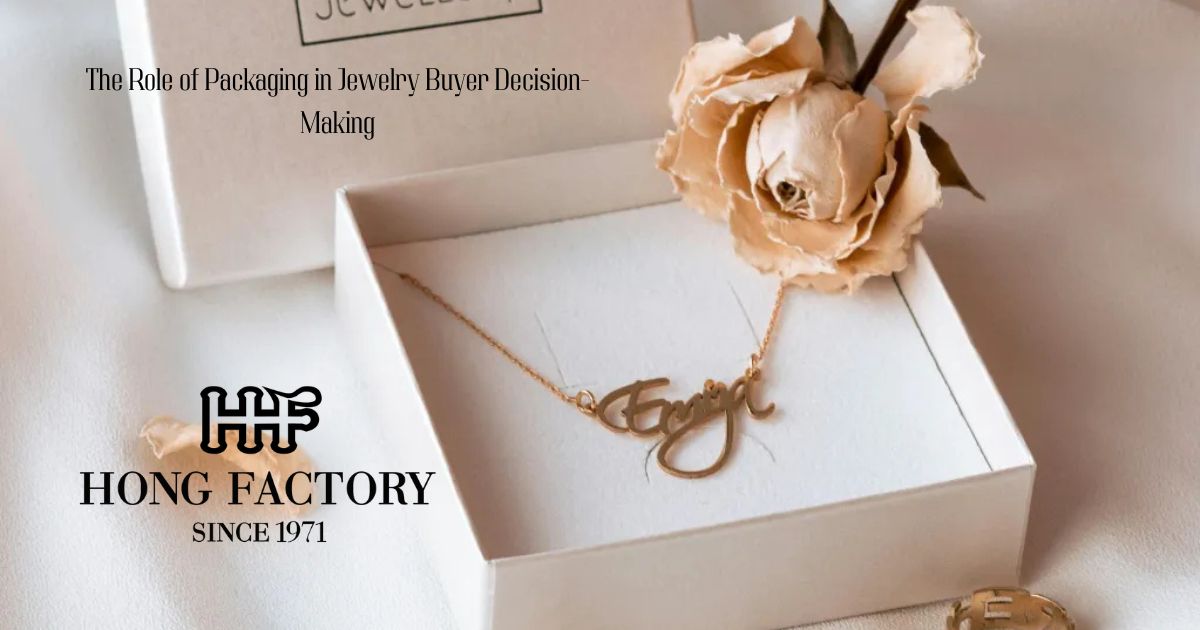
In a world where first impressions count, packaging is no longer just a protective layer it’s a powerful marketing tool. For jewelry buyers, especially in B2B and high-end retail, packaging often plays a pivotal role in influencing purchase decisions, brand loyalty, and perceived value. Whether you’re a wholesaler looking to impress retailers or a brand targeting boutique customers, understanding the impact of packaging can help you stand out in a competitive market.
The Role of Packaging in Jewelry Buyer Decision-Making

Why Packaging Matters in Jewelry Sales
Jewelry packaging is more than an aesthetic add-on it communicates brand promise, product quality, and customer experience.
Key Reasons Packaging Influences Buyer Decisions:
- Perceived Value: Elegant packaging makes the jewelry feel more luxurious
- Brand Identity: Reinforces your design philosophy, professionalism, and attention to detail
- Gift-Readiness: Buyers love products that are ready to present, especially for seasonal collections
- Unboxing Experience: Enhances emotional engagement and encourages social sharing
First Impressions and Shelf Appeal
In retail or showroom settings, packaging can be a deciding factor.
What Buyers Look For:
- Clean design that matches the jewelry style
- Clear branding without being overly commercial
- High-quality materials: textured paper, velvet, matte finishes
- Visual consistency across product lines
Tip: Match your packaging color palette to your brand tone—minimalist brands should avoid flashy metallics, while vintage lines may benefit from ornate textures and script fonts.
Packaging as a B2B Sales Differentiator
Wholesale and OEM buyers compare not just price and product, but also presentation.
For Retail Buyers:
- Well-designed packaging reduces their in-store display workload
- Makes product look higher value without needing discounts
- Easier to sell as a gift item or premium product
For Boutique Owners:
- Adds storytelling potential in their own marketing
- Reinforces quality perception to their customers
Example: A wholesale marcasite jewelry brand that introduced eco-luxe packaging with magnetic boxes and printed inserts saw a 22% increase in retailer reorder rate over two quarters.
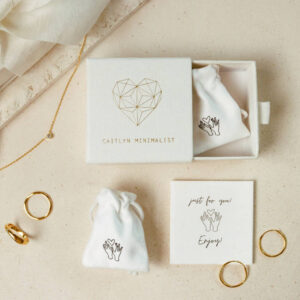
Elements of Effective Jewelry Packaging
1. Box or Case Design
- Rigid box with soft insert or custom molded trays
- Hinged lid, magnetic flap, or drawer-style formats
- Easy to open, but secure enough for shipping
2. Materials and Sustainability
- Use recyclable or FSC-certified paper and soy inks
- Offer reusable pouches made from cotton, suede, or velvet
Bonus: Add “eco-conscious” icons or messages to appeal to sustainability-minded buyers.
3. Branded Touchpoints
- Printed logo inside lid or on cleaning cloth
- Custom tags or care cards explaining product care
- QR codes linking to product stories, styling tips, or catalogs
4. Layered Experience
- Outer shipping box → inner branded box → jewelry reveal → message or thank-you card
- Mirror the luxury brands’ “moment of discovery” approach
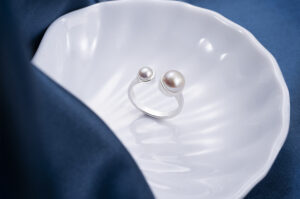
Seasonal and Limited-Edition Packaging
Packaging is also a great way to build anticipation and create exclusivity.
Examples:
- Summer Collection: Linen-textured boxes with pastel interiors
- Holiday Edition: Gold-embossed ribbons and red velvet inserts
- Anniversary Set: Numbered packaging or signed artist cards
Marketing Tip: Promote limited packaging as a collector’s item for repeat buyers.
Common Mistakes to Avoid
- Overly bulky packaging that increases shipping costs
- Generic, unbranded boxes that reduce memorability
- Inconsistent packaging design across SKUs or collections
- Fragile inserts that break during transport
Always test packaging durability and practicality before bulk production.
How to Align Packaging with Brand Strategy
Ask:
- Does our packaging reflect our price point and positioning?
- Would a retailer be proud to display this packaging in their store?
- Are we telling a story through every layer?
Brand-aligned packaging doesn’t need to be expensive—it needs to be intentional.
Packaging That Sells
For jewelry businesses, packaging is part of the product. It influences how buyers perceive your brand, how retailers position your line, and how customers remember your name.
Whether you sell handcrafted silver pieces, modern minimalist jewelry, or luxury marcasite collections, investing in thoughtful packaging isn’t optional—it’s strategic.
Because in jewelry, the box can be just as important as what’s inside.

When working with a manufacturer or design partner on made-to-order (MTO) jewelry, clear communication is everything. Unlike ready stock items, custom designs require precision, planning, and partnership. A vague email or misunderstood sketch can lead to costly errors, delays, or products that don’t align with your brand vision. Here’s how to effectively communicate your design requirements to ensure that your made-to-order jewelry is delivered exactly as you imagined on time and within budget.
How to Communicate Design Requirements for Made-to-Order Jewelry

Start with a Clear Creative Brief
A strong design begins with context.
Include in your brief:
- Collection name or theme
- Target customer profile
- Intended use (casual, bridal, statement, daily wear)
- Reference images or mood boards
Why it matters: Helps the manufacturer understand the design purpose, tone, and style direction.
Specify Product Type and Function
Be specific about what the product is and how it’s worn.
- Is it a ring, pendant, bracelet, or cuff?
- Should it be adjustable or fixed size?
- Is it unisex or gender-specific?
- Will it require matching pieces (e.g., earring sets)?
Clarity up front prevents assumptions.
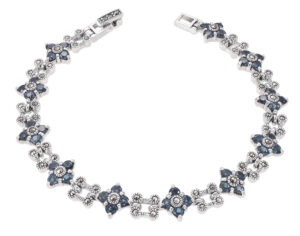
Provide Technical Drawings or CAD References
If you have access to CAD files or sketches, include them.
- Mark dimensions (length, width, depth)
- Indicate settings (bezel, prong, channel)
- Show engraving or texture placement
Tip: If you’re not a designer, request a CAD rendering after your brief to ensure alignment.
Define Materials and Finishes
List every component with detail:
- Base metal (925 silver, brass, stainless steel)
- Plating type and color (rhodium, gold vermeil, matte, high polish)
- Gemstones (type, cut, color, origin)
- Settings (number of stones, sizes, arrangement)
Include photos or physical samples for color reference.
Communicate Sizing and Adjustability
Differentiate between standard sizes and special requests.
- Ring sizes in US/UK/EU scale
- Bracelet/chain lengths (in inches or cm)
- Adjustable components (extender chains, open-back rings)
Note: Confirm if molds will be reused across sizes.
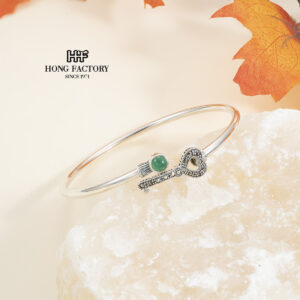
State Branding and Packaging Requirements
If you need branded touches, be specific:
- Logo placement (engraved, stamped, lasered)
- Hang tags or barcodes
- Branded pouches, boxes, inserts
Include dielines or packaging templates if needed.
Outline Your Timeline and Production Phases
Set expectations clearly:
- Sampling lead time
- Feedback windows for CAD or prototypes
- Production lead time
- Final delivery and shipping buffer
Build in extra time for revisions and adjustments.

Confirm MOQ and Pricing Structure
Be transparent about your target quantities and budget.
- Minimum order quantity per SKU
- Tiered pricing based on volume
- Sampling or mold fees
Ask for quotes upfront to prevent surprises.
Use a Shared Format for Communication
Avoid miscommunication by standardizing file delivery and feedback.
- Use shared documents or folders (Google Drive, Dropbox)
- Submit feedback in writing with visuals
- Reference version numbers for CAD updates
Tip: Keep a running “master spec” document that tracks changes.
Schedule Regular Checkpoints
Don’t wait until production is complete to review progress.
- Set dates for sample review and approvals
- Request production photos before finalizing
- Confirm final QC checks with your partner
Consistency prevents costly last-minute issues.
Precision Builds Partnership
Designing made-to-order jewelry is a collaborative process that thrives on clarity, visuals, and structured communication. When you provide specific, consistent, and well-documented design requirements, you empower your manufacturer to deliver with excellence.
Every detail counts because in custom jewelry, the smallest miscommunication can lead to the biggest disappointment.
And when you get it right? You don’t just create beautiful pieces.
You create trust and long-term success.

In the world of jewelry retail, packaging the right products into gift sets or seasonal promotions can significantly boost sales, increase customer engagement, and drive brand loyalty. One of the most overlooked but incredibly effective materials for these efforts is marcasite.
With its vintage charm, subtle sparkle, and high perceived value, marcasite jewelry checks all the boxes for gift-worthy appeal. Whether you’re curating Mother’s Day collections, holiday promos, or subscription box offerings, here’s why marcasite belongs in your promotional strategy and how to make it shine.
Why Marcasite Jewelry Is Ideal for Gift Sets and Promotions
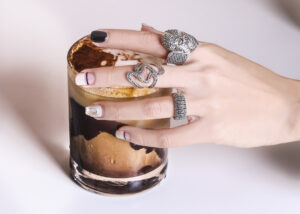
1. Built-In Emotional Value
Marcasite has a romantic, nostalgic quality that naturally aligns with gifting occasions.
Why it resonates:
- Reminds buyers of heirloom or antique jewelry
- Feels meaningful without being overly expensive
- Symbolic of timeless love and quiet elegance
Perfect for emotional holidays like Valentine’s Day, anniversaries, or milestone celebrations, marcasite sets help gift givers feel like they’re offering more than just jewelry they’re giving a story.
2. High Style at an Accessible Price
One of marcasite’s biggest advantages is its luxury appearance at mid-range price points.
- Sterling silver bases with intricate hand-setting
- Sparkle without flashy stones (subtle enough for everyday)
- Vintage look that feels upscale but stays affordable
This makes marcasite ideal for gift sets that need to look impressive without exceeding standard promotional price thresholds (e.g., under $150 per set).
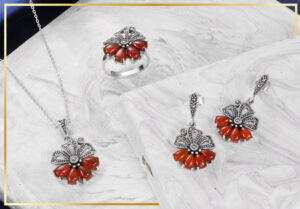
3. Works Beautifully in Coordinated Sets
Marcasite jewelry pieces often feature repeat motifs and patterns, making them easy to group into:
- Pendant + earring sets
- Ring + bracelet bundles
- Trio kits (studs, necklace, and cuff)
Why it helps:
- Simplifies decision-making for gift buyers
- Looks polished and professional in packaging
- Increases average order value
You can offer sets with matched finishes, motifs (floral, Art Deco, celestial), or gemstone accents to suit different buyer personas.
4. Versatile Across Ages and Genders
Marcasite’s classic aesthetic appeals to multiple demographics:
- Younger buyers who love vintage styling
- Middle-aged gift buyers seeking elegant, safe choices
- Older generations who appreciate craftsmanship and tradition
- Even men’s accessories, like cufflinks or tie bars, with marcasite inlays
This wide appeal makes it easier to use across seasonal campaigns and gifting categories.
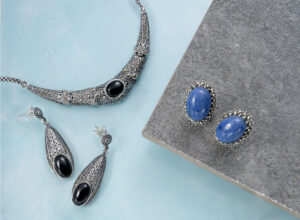
5. Strong Perceived Sentiment for Occasions
Gift buyers want their purchase to feel meaningful, and marcasite delivers:
- For mothers: soft sparkle and timeless elegance
- For friends: thoughtful, understated luxury
- For bridesmaids: coordinated but unique designs
- For holiday giving: nostalgic, wintry shine
Because it often features symbolic shapes (hearts, leaves, stars), marcasite is perfect for message-based promotions.
6. Beautiful in Seasonal Campaign Visuals
Marcasite photographs well under soft lighting and complements seasonal packaging themes:
- Holiday: velvet boxes, snowflake motifs, warm-toned backgrounds
- Spring: floral packaging, botanical motifs
- Fall: antique textures, lace and paper styling
Visual storytelling ideas:
- “Gifts That Sparkle with History”
- “Vintage Touches for Timeless Moments”
- “Wrapped in Elegance: Marcasite Gift Sets”
This makes it easy to integrate into catalogs, social media, or ecommerce banners.
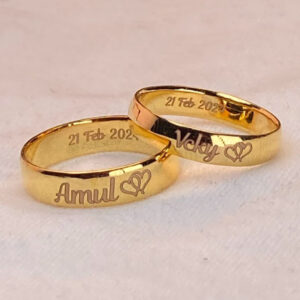
7. Customizable for Gifting Campaigns
Working with OEM or wholesale partners, you can develop:
- Birthstone-marcasite combinations
- Engravable lockets or charm bracelets
- Limited-edition seasonal packaging
These options encourage customers to buy early, buy more, and share their experience with others.
8. Compact and Efficient for Shipping
Unlike bulky statement jewelry, most marcasite items:
- Are lightweight
- Come in compact dimensions
- Require less protective packaging
This makes them ideal for:
- Subscription boxes
- E-commerce gift campaigns
- In-store displays with small footprints
You save on logistics while offering a product that still feels substantial.
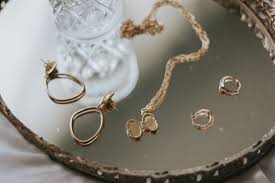
9. Easy to Position in Promotions
Because it blends modern wearability with old-world charm, marcasite fits into many sales strategies:
Examples:
- Buy One, Gift One: Pair two matching marcasite rings in a box
- Holiday Set Bundles: Necklace + earring + travel pouch
- Free Gift with Purchase: Marcasite studs added to carts over $100
Its mid-range price and premium look make it a flexible promo product.
10. Real-World Example: Success in Holiday Campaigns
A North American retailer launched a “Winter Sparkle” campaign with three marcasite bundles:
- A heart pendant and matching earrings in a velvet box
- A floral ring + stud set in a travel-friendly pouch
- A zodiac-inspired necklace with optional engraving
Results:
- 70% sell-through rate within the first four weeks
- 40% of purchasers added a second set as a gift
- Instagram engagement doubled with unboxing content
The key? Styling, sentiment, and coordinated packaging.
Sparkle with Meaning
Marcasite jewelry isn’t just beautiful it’s built for gifting. With its nostalgic tone, elegant look, and easy bundling potential, it’s a natural choice for promotions that need to feel personal, timeless, and valuable.
Whether you’re planning your next seasonal campaign or launching a loyalty-boosting offer, marcasite gives you the storytelling power and visual appeal to make every gift feel unforgettable.
In short: It sells sentiment and that’s what gifting is all about.

When building a jewelry brand or planning your next collection launch, deciding on a feature product can be a strategic turning point. While every piece has its place, the decision often comes down to two iconic categories: rings and pendants. Both are crowd favorites, but each brings unique benefits in production, marketing, and long-term brand identity.
So how do you choose the right focus for your campaign, catalogue cover, or seasonal push?
Let’s break down the key considerations to help you decide whether rings or pendants should take center stage in your next jewelry move.
Choosing Between Rings and Pendants for Your Feature Product
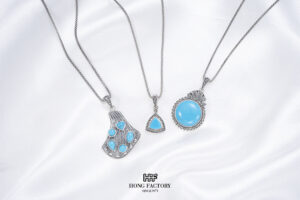
1. Wearability & Market Reach
Rings:
- Highly personal and size-specific
- Often tied to sentimental meaning (engagement, friendship, commitment)
- Popular in stackable or collectible formats
Best for: customers seeking individuality, emotional connection, or customization
Pendants:
- One-size-fits-most; fewer sizing complications
- Easy to layer or wear as a statement piece
- Suitable across all ages and genders
Best for: ease of gifting, minimalist collections, or wide-reaching campaigns

2. Production Efficiency & Cost
Rings:
- Require multiple sizes (typically 5–9 or beyond)
- Inventory complexity increases with design variations
- Mold cost per size adds to upfront production budget
Pendants:
- Single size, single mold
- Simpler to batch produce
- Often more cost-effective for sampling and testing
Winner for flexibility: Pendants, especially for new brands testing the market
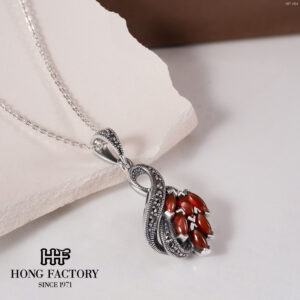
3. Photography & Visual Impact
Rings:
- Excellent for macro photography and storytelling close-ups
- Great for lifestyle shots (hands, gesture-based visuals)
- Can get lost in wide or flat-lay shots
Pendants:
- Stand out well in flat-lays and on bust displays
- Offer more space for design expression and focal points
- Strong visual anchors for social media and lookbooks
Winner for catalog or hero imagery: Pendants
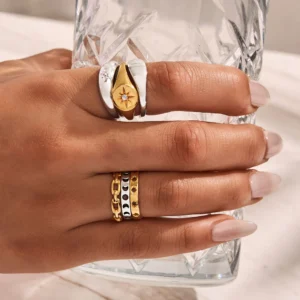
4. Customization & Personalization Potential
Rings:
- High emotional value
- Commonly engraved or used for birthstones, initials, or symbolic motifs
- Popular for collections built around milestones
Pendants:
- Easier to add engraving plates or interchangeable elements
- Versatile in charm-style capsule collections
- Allow for mix-and-match layering
Best for storytelling: Rings (emotional), Pendants (narrative-driven)
5. Upselling & Bundling Opportunities
Rings:
- Stackable styles encourage repeat purchases
- Often sold in 2–3 piece sets for styling
Pendants:
- Easy to pair with earrings, chains, or bracelet charms
- More forgiving in bundled lengths and styles
Best for cross-selling: Both depending on your brand aesthetic and pricing tier

6. Retail Display & E-Commerce Versatility
Rings:
- Require finger size selection tools and clear sizing guides online
- Smaller surface area may limit visible detail in thumbnail views
Pendants:
- Easier to size visually for shoppers
- Simple chain-length dropdowns in online shops
- Highly adaptable for various packaging formats
Best for logistics & UX: Pendants

7. Brand Identity & Long-Term Positioning
Rings:
- Work well for brands centered around sentiment, commitment, or fine craftsmanship
- Anchor categories for bridal, occasion-based, or heirloom-positioned lines
Pendants:
- Ideal for accessible luxury, gifting brands, or symbol-based design language
- Easy to adapt to trend-based or seasonal storytelling
Long-term strategy: Rings build legacy; pendants build reach
Which One Should You Lead With?
If you’re launching a brand-new collection, pendants offer flexibility, lower production risk, and easier visual marketing. They’re ideal for testing themes, driving sales during gifting seasons, and capturing a broader audience with fewer sizing constraints.
If your brand is looking to deepen emotional resonance, rings can anchor identity-driven campaigns. From heirloom motifs to stackable ring sets, they serve as a tactile symbol of personal story and loyalty.
Pro Tip: Combine Strategically
You don’t have to choose forever. Many successful collections pair both:
- Lead with a pendant as your hero piece
- Add matching rings for storytelling and bundling
- Launch a follow-up capsule with variation (e.g., “Sunrise Pendant” + “Sunrise Stack Ring”)
By aligning your lead product with your campaign goals, customer habits, and production capabilities, you maximize impact and minimize uncertainty.
So: Rings or pendants?
The best answer might be: start with one, plan for both.
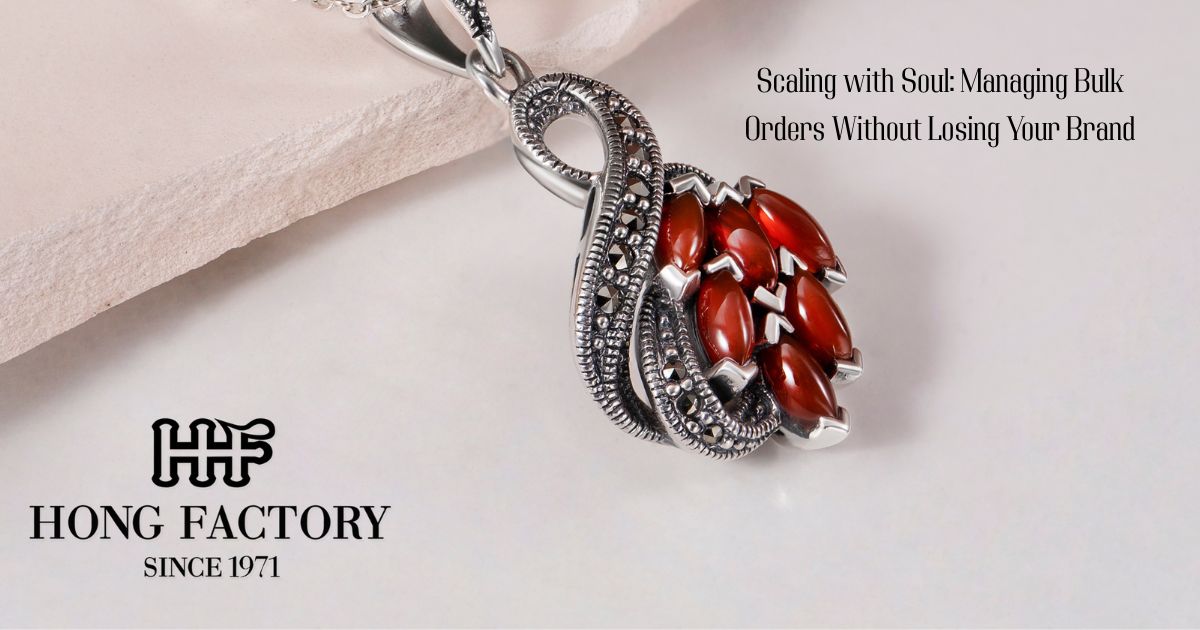
Growth is a goal every jewelry brand shares but scaling, especially through bulk orders, brings challenges that can compromise the very identity you’ve worked to build. When quantity increases, quality, authenticity, and brand storytelling can get lost in the noise. But it doesn’t have to be that way. Here’s how to manage bulk orders while preserving what makes your brand special and keep growing with soul.
Scaling with Soul: Managing Bulk Orders Without Losing Your Brand
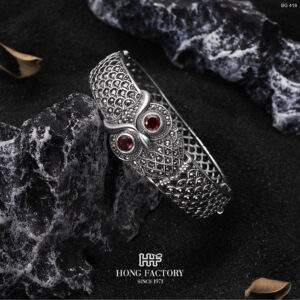
Rethink What Scaling Means
Scaling isn’t just about producing more. It’s about expanding impact without erasing intention.
- Quality over volume: Focus on systems that maintain craftsmanship, not just speed.
- Relationship-driven growth: Partner with clients who align with your values.
- Sustainable practices: Build processes that are ethical, not extractive.
Start with a growth philosophy, not just a production plan.
Keep Brand Identity at the Core
When managing larger orders, your brand identity must remain non-negotiable.
- Reaffirm your core design language: motifs, textures, materials.
- Don’t dilute your aesthetic for quick wins stay recognizable.
- Use brand-aligned packaging, even for B2B clients.
Your distinctiveness is your value especially in a bulk context.
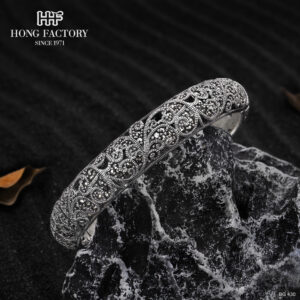
Build Scalable Systems Without Going Generic
Streamlining doesn’t mean standardizing everything.
- Develop modular designs: variations on best-sellers that share components.
- Create production templates that maintain aesthetic control.
- Automate admin and logistics but not personalization or storytelling.
Your systems should support brand identity, not override it.
Choose the Right Wholesale Partners
Not every bulk buyer is the right fit.
- Prioritize buyers who share your values (e.g., sustainability, slow fashion).
- Vet partners for pricing transparency, ethical resell practices, and brand synergy.
- Use onboarding tools (line sheets, lookbooks) that reflect your brand’s voice.
Choose fewer but better partners who see your brand as more than just SKUs.
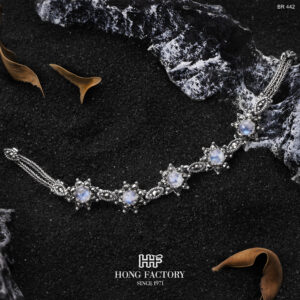
Design “Scalable Soul” Collections
Create collections with built-in flexibility:
- Start with a signature silhouette or motif
- Offer color, metal, or gemstone variations for different markets
- Allow small personalization elements (e.g., engraving, adjustable sizing)
These collections scale efficiently but retain the essence of hand-touch.
Maintain Handmade or Artisan Elements
Incorporate artisanal components even if they’re small:
- Hand-set stones, unique textures, or oxidized finishes
- Use regional materials or techniques that tell a story
- Include artisan profiles in wholesale presentations
These human details reinforce authenticity at scale.
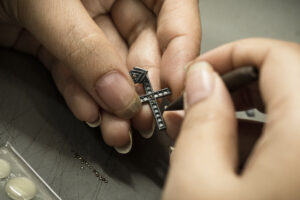
Communicate Your Values at Every Stage
Just because you’re selling in bulk doesn’t mean you go silent on story.
- Use storytelling inserts in every order: who made it, what inspired it
- Offer retailers marketing kits with your values, founder story, and styling tips
- Be visible: share BTS (behind-the-scenes) of your bulk process with transparency
This builds brand loyalty through both buyers and end customers.
Avoid the Temptation of Overproduction
Not every product is meant to scale.
- Stay focused on data-driven best-sellers
- Offer exclusive lines or small-batch capsules to test new directions
- Preserve limited drops to protect brand scarcity and desirability
Intentional limits can be a growth strategy.

Use Feedback Loops to Stay Grounded
Bulk doesn’t mean blind.
- Get feedback from wholesale partners on what resonates and what doesn’t
- Talk to end customers to see how bulked products are received
- Refine collections based on performance, not assumptions
Iterate like a small brand, even when you’re producing big.
Real-World Example: The Modular Marcasite Line
A Thai jewelry manufacturer developed a modular marcasite collection using a shared stone setting across rings, pendants, and earrings. This allowed for mass production without losing the hand-set look. Each wholesale client received marketing cards about the craftsmanship and regional origin. As a result, the collection sold in 12 countries without compromising identity.
Grow Without Losing Your Glow
Scaling with soul is possible. It takes clarity, intention, and courage to protect what matters most your story, your values, your design language.
So grow. Produce more. Reach further.But never at the cost of who you are.
Because the best brands don’t just get bigger they get deeper.



